The Forty Foot is part of the Pavilion Theatre complex, overlooking Dun Laoghaire harbour. Less than a mile further along the rock-strewn coast is Sandycove and the famous ‘Forty Foot’. Originally known as the ‘Forty Foot Hole’, this deep-water inlet was a ‘Gentlemen only’ bathing place for nearly 200 years. It is now a year-round venue open to all and the vagaries of the weather.
Prints and text about The Forty Foot.
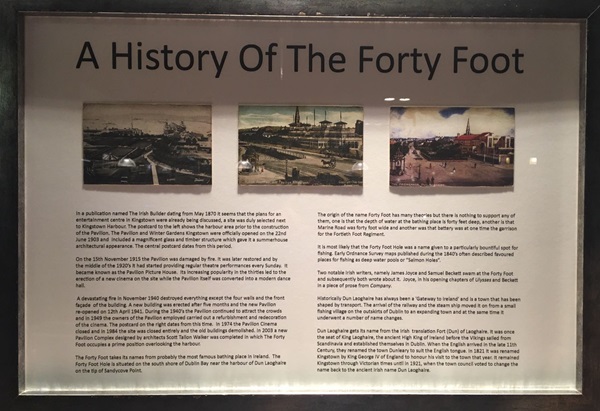
The text reads: In a publication named The Irish Builder dating from May 1870 it seems that the plans for an entertainment centre in Kingstown were already being discussed, a site was duly selected next to Kingstown Harbour. The postcard to the left shows the harbour area prior to the construction of the Pavilion. The Pavilion and Winter Gardens Kingstown were officially opened on the 22 June 1903 and included a magnificent glass and timber structure which gave it a summerhouse architectural appearance. The central postcard dates from this period.
On the 15 November 1915 the Pavilion was damaged by fire. It was later restored and by the middles of the 1920s it had started providing regular theatre performances every Sunday. It became known as the Pavilion Picture House. Its increasing popularity in the thirties led to the erection of a new cinema on the site while the Pavilion itself was converted into a modern dance hall.
A devastating fire in November 1940 destroyed everything except the four walls and the front façade of the building. A new building was erected after five months and the new Pavilion re-opened in 12 April 1941. During the 1940s the Pavilion continued to attract the crowds and in 1949 the owners of the Pavilion employed carried out a refurbishment and redecoration of the cinema. The postcard of the right dates from this time. In 1947 the Pavilion Cinema closed and in 1984 the site was closed entirely and the old buildings demolished. In 2003 a new Pavilion Complex designed by architects Scott Tallon Walker was completed in which The Forty Foot occupies a prime position overlooking the harbour.
The Forty Foot takes its named from probably the most famous bathing place in Ireland. The Forty Foot Hole is situated on the south shore of Dublin Bay near the harbour of Dun Laoghaire on the tip of Sandycove Point.
The origin of the name Forty Foot has many theories but there is nothing to support any of them, one is that the depth of water at the bathing place is forty feet deep, another is that Marine Road was forty foot wide and another was that battery was at one time the garrison for the Fortieth Foot Regiment.
It is most likely that the Forty Foot Hole was a name given to a particularly bountiful spot for fishing. Early Ordnance Survey maps published during the 1840s often described favoured places for fishing as deep water pools of “Salmon Holes”.
Two notable Irish writers, namely James Joyce ad Samuel Beckett swam at the Forty Foot and subsequently both write about it. Joyce, in his opening chapters of Ulysses and Beckett in a piece of prose from Company.
Historically Dun Laoghaire has always been a “Gateway to Ireland” and is a town that has been shaped by transport. The arrival of the railway and the steam ship moved it on from a small fishing village on the outskirts of Dublin to an expanding town and at the same time it underwent a number of names changes.
Dun Laoghaire gets its name from the Irish translation Fort (Dun) of Laoghaire. It was once the seat of King Laoghaire, the ancient High King of Ireland before the Vikings sailed from Scandinavia and established themselves in Dublin. When the English arrived in the late 11th century, they renamed the town Dunleary to suit the English tongue. In 1821 it was renamed Kingstown by King George IV of England to honour his visit to the town that year. It remained Kingstown through Victorian times until 1921, when the town council voted to change the name back to the ancient Irish name Dun Laoghaire.
An old photograph of Dún Laoghaire.
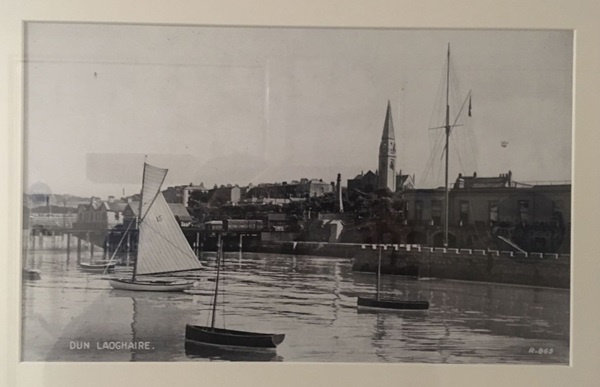
An old photograph of the arrival of a malt boat, Kingstown.
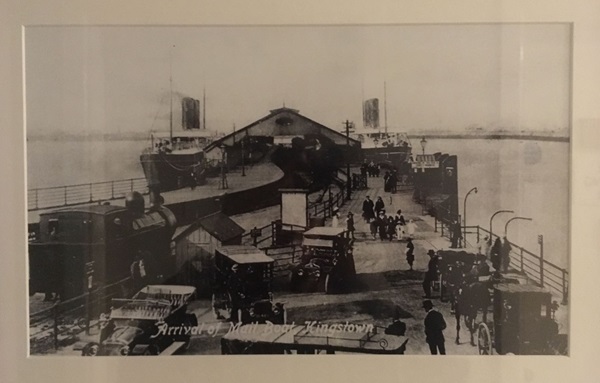
A photograph of the Christmas Day swim in 1971, Forty Foot, Sandycove.
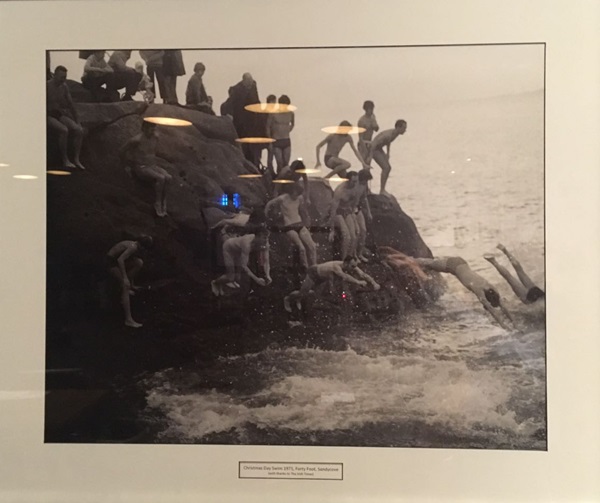
(With thanks to The Irish Times.).
An old photograph of the gardens and pier, Dún Laoghaire, Kingstown.
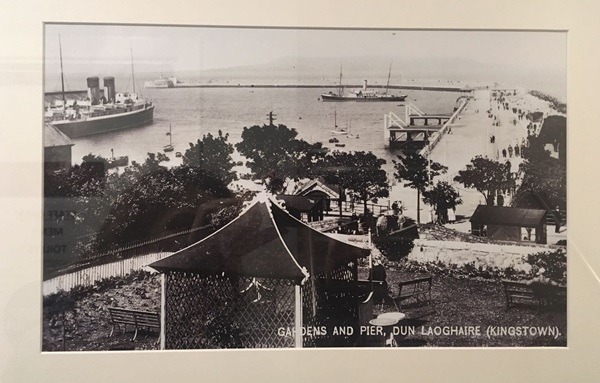
An old photograph of the Forty Foot, Sandycove.
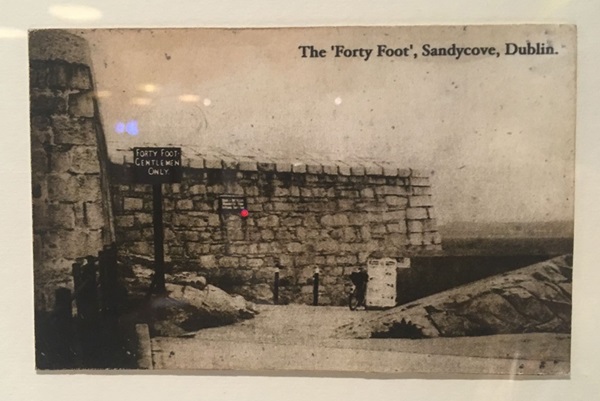
A print of an original engraving by Andrew Nicholl, c1834.
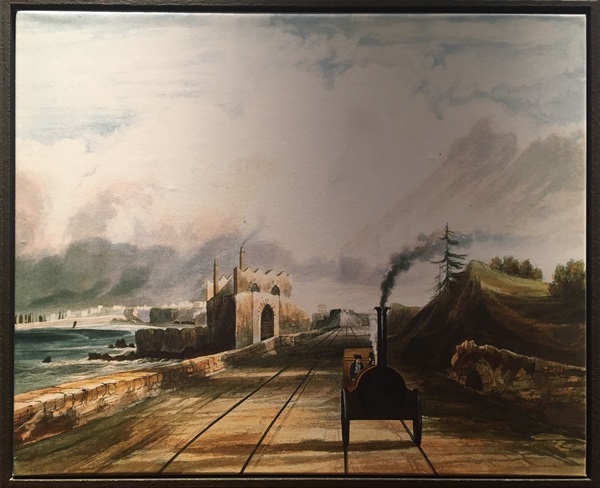
The Dublin and Kingstown Line was Ireland’s first railway, built in 1834. Initially it ran from Westland Row to Salthill.
The Dublin and Kingstown Railway Committee encountered great difficulty in the purchase of land along the seafront and this picture shows the lengths the railway committee went to in order to secure the line, namely constructing a private footbridge for the owner of this stretch of land, Lord Cloncurry.
In this artwork Kingstown Harbour can be seen in the background.
External photograph of the building – main entrance.
.jpg?h=450&&w=600&la=en&hash=1193B11C6B18F701967B3734D842E626546D7854)
If you have information on the history of this pub, then we’d like you to share it with us. Please e-mail all information to: pubhistories@jdwetherspoon.co.uk